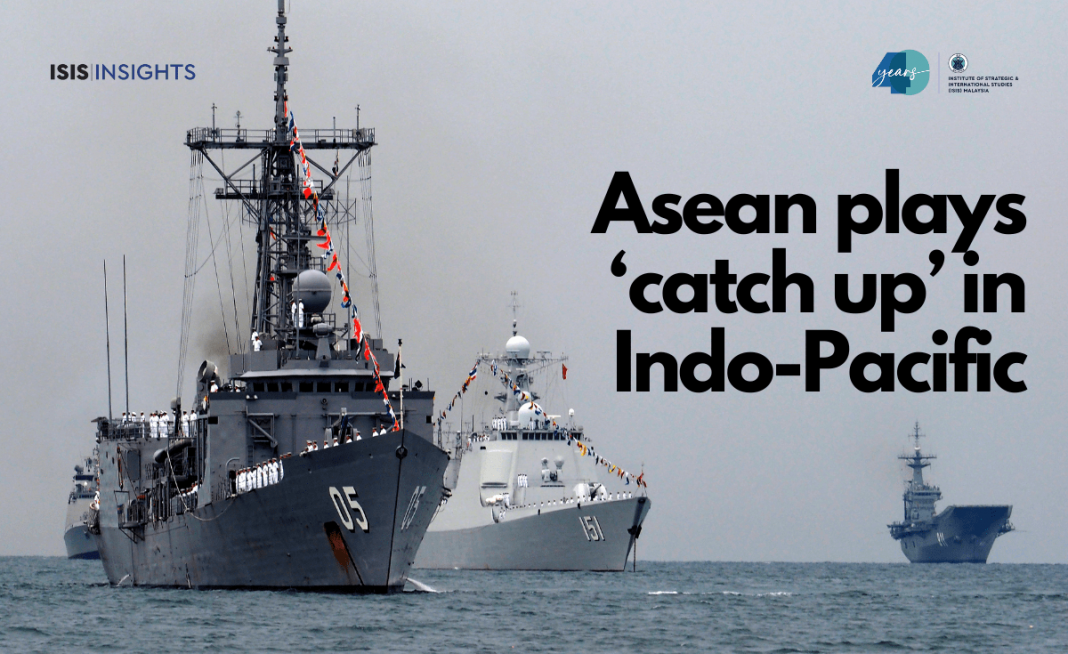Bloc must seize initiative before ‘outsiders’ set geostrategic dynamics
In the recently concluded 42nd Asean summit in Labuan Bajo, Indonesia, Asean member states reiterated their desire to mainstream the four priority areas of the Asean Outlook on the Indo-Pacific (AOIP).
The document was released in 2019 detailing Asean’s approach to the Indo-Pacific – a region of growing significance that puts Southeast Asia at the heart of geostrategic engagement.
The priority areas were maritime cooperation, connectivity, United Nations Sustainable Development Goals 2030, economic and other possible areas of cooperation that are to be advanced through projects and activities.
Member states also reaffirmed the common interest to develop the Asean road map to promote AOIP.
In a first, the Asean chairman’s statement announced the convening of an Asean-Indo-Pacific forum on implementing AOIP. This follows an idea mooted in March to hold the Asean Indo-Pacific infrastructure forum in September 2023.
These steps indicate a greater commitment to the Indo-Pacific region at a time where Asean appears late to the party with its “out-of-vogue” outlook.
Outdated outlook
The truth is AOIP is indeed outdated. The outlook no longer accounts for the current geopolitical context and regional dynamics. Asean can still function on the core principles laid out in AOIP but can’t rely on them to respond or engage with newer Indo-Pacific strategies and approaches.
In the last few years, the European Union, India, South Korea and Canada have unveiled their strategies while mini-lateral mechanisms, such as QUAD and AUKUS, have increased both visibility and activity in the region.
AOIP is, in essence, “Asean-heavy”, articulating syntax, pragmatics and semantics that prioritise “Asean centrality” in the Indo-Pacific and emphasising the importance of Asean-led forums and mechanisms.
There’s no question that all stakeholders in the Indo-Pacific recognise and endorse “Asean centrality” and incorporate it in their own strategies but what that “centrality” means to Asean and its individual members is still uncertain.
On other articulations in AOIP, while there is mention of exploring synergies with sub-regional frameworks, this appears like an afterthought. Indeed, one of the main issues of AOIP is its failure to convince sufficiently Asean’s strategic partners that it is a “fulcrum of regional cooperation”.
Staying relevant
The Indo-Pacific region’s importance has dragged Asean to the forefront – not necessarily with its “permission”. Simply put, while a stakeholder may not consider Asean its most important partner in the region, it certainly cannot afford to ignore it, by virtue of its presence and value in the region.
Asean’s “default” significance has created a sort of expectation-versus-reality paradox that:
- deepens the impression that Asean lacks a sense of urgency that is required in this status quo;
- reiterates that Asean is not keeping up with the times, losing relevance and a strong enough hold in the emerging Indo-Pacific; and,
- questions Asean’s role, stance, intentions, principles and values in the status quo.
It is heartening to note that the current Asean chair, Indonesia, the most ardent AOIP “architect” back in 2019, acknowledges the current realities and sees merit enhancing Asean’s role and value in the Indo-Pacific.
The chairman’s statement underlines how crucial it is that Asean remains a platform for dialogue and cooperation towards continued progress, peace and prosperity.
Regionally, Asean is beginning to engage better with Indo-Pacific partners on shared priorities. Seven out of 10 Asean member states attended the EU Indo-Pacific ministerial forum held only a few days after the Asean summit.
This shows an acceleration in the way member states approached the emerging Indo-Pacific. While these developments are encouraging, it does not change the fact that AOIP requires an urgent update.
Naysayers may argue that Asean is too preoccupied with domestic challenges, such as the Myanmar crisis, but this is perhaps where Prime Minister Datuk Seri Anwar Ibrahim’s suggestion of “carving Myanmar out for now” rather than let its crisis hinder the bloc makes most sense.
It is crucial that this step-by-step “embrace” of the Indo-Pacific and adoption of nuanced policy directions culminates in an updated AOIP aware of the geopolitical realities of the day.
Asean must be perceptive of AOIP or risk a “withering” away altogether.





